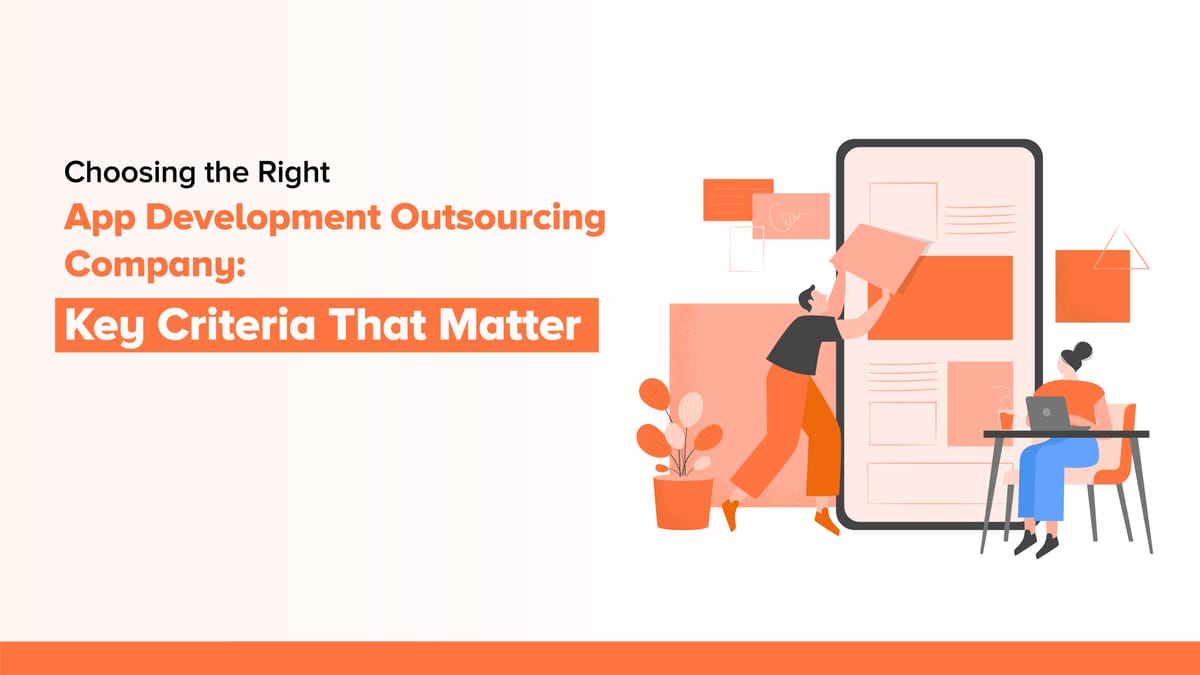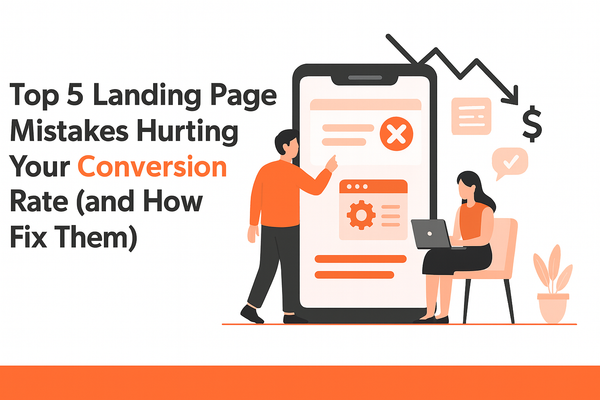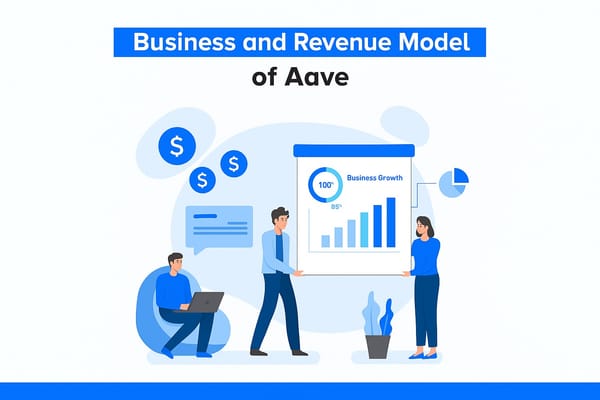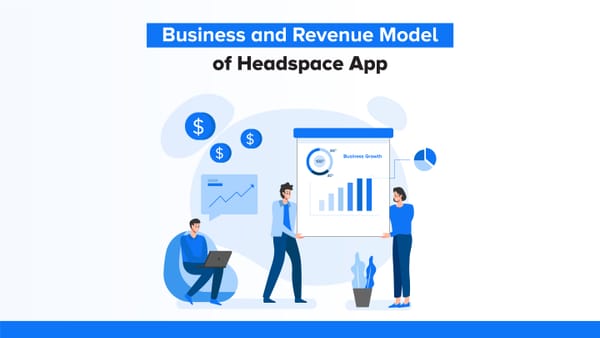Choosing the Right App Development Outsourcing Company: Key Criteria That Matter

In the past few years, something has shifted. As the world transitioned to remote work and routines moved online, mobile apps stopped being a convenience and became a lifeline. From managing health to ordering groceries, we started relying on apps for just about everything.
But with this boom came something else: higher expectations.
People no longer download apps just because they exist. They look for seamless experiences, real value, and thoughtful design and that pressure? It falls squarely on the team building those apps.
For companies, launching an app today isn’t just about speed or budget; it’s about getting it right. And that begins with choosing the right development partner.Not just someone who can code, but someone who understands product-market fit, user behaviour, scalability, and quality. A team that builds with your goals in mind, not just your feature list.
No surprise then that 81% of organisations plan to increase their outsourcing efforts over the next three to five years, according to Deloitte’s latest report.
Whether you're a founder with a bold idea or an enterprise scaling fast, choosing the right outsourcing partner is the first real decision that shapes everything that follows. In the sections ahead, this article will help you ask the right questions, avoid costly missteps, and select a partner who can bring your vision to life as a product that performs.
Track Record & Technical Expertise
Choosing an outsourcing partner is less about who can write code and more about who understands what your product actually needs to succeed. The right development team brings both technical fluency and a deep understanding of your business context.
Start by looking at their domain experience, such as fintech, healthtech, or e-commerce. A team that understands your regulatory environment, user expectations, and market dynamics will build smarter and more relevant solutions.
Then assess their technical toolkit. Are they adept with frameworks that align with your product roadmap?
- React Native for cross-platform speed
- Flutter for polished UI
- Kotlin or Swift for robust native builds?
What really sets great partners apart is their track record of scaling. It’s one thing to build an MVP. It’s another to evolve that MVP into a stable, revenue-generating platform that survives real-world usage and adapts as the market shifts. And you want a team that has done this before, more than once.
One additional consideration is to review recent case studies or conduct a walkthrough to ensure the real value and results they have delivered, thereby confirming the right fit.
Operational compatibility
Finding a skilled team is just the start; what truly drives results is how seamlessly their workflow blends with yours. It’s not just about deadlines and stand-ups; it’s about whether they adapt to your tools, processes, and communicate with the same urgency your product demands. A partner that runs agile in name only, or responds days later to shifting priorities, will slow you down no matter how talented they are. But when teams sync in rhythm, sharing updates in real-time, flagging blockers early, and iterating quickly, the collaboration starts to feel less like outsourcing and more like an in-house extension of your core team.
Financial Transparency & Pricing Structure
When it comes to outsourcing, a clear conversation from the start can save you from costly surprises later. A reliable partner should offer transparent pricing models, whether it’s time and materials (T&M) for flexibility, fixed price for scope-bound projects, or milestone-based billing that links payments to delivery. But pricing alone isn’t the whole picture. You also need scope clarity to ensure that all deliverables are defined, avoiding grey areas that might lead to unexpected costs later.
Don’t forget to ask about post-launch costs too, such as support, bug fixes, and scaling costs, which aren’t always included. Finally, don’t overlook the change request policy to keep your budget and vision aligned as priorities shift and you need to know how changes will be handled, both in terms of flexibility and billing.
Security, IP & Ownership
Building an app with an external team means opening the doors to your business’s most valuable assets: data, ideas, and plans. According to Gartner, spending on data privacy and cloud security is among the fastest-growing segments in 2024, with each segment experiencing over 24% year-over-year growth. That’s why security and ownership need to be locked in from the very beginning. A reliable partner will already be compliant with international standards, such as ISO 27001, HIPAA and GDPR. They’ll ensure you have full access to the source code, technical documentation, and everything needed to take control when you’re ready.
Beyond that, contracts should clearly define ownership rights, exit terms, and post-launch transitions, along with robust data protection and cybersecurity measures. No surprise that spending on security services, including consulting, IT outsourcing, and support, was projected to hit $90 billion in 2024, according to Gartner.
Case Studies and Client Trust
A reliable app development partner should have a strong digital footprint. We can start by checking various key indicators, such as verified client testimonials on platforms like Clutch, GoodFirms, and Gartner, which reveal credibility and demonstrate how others rate their performance. Moreover, a few additional considerations to keep in mind when determining the right approach include examining recent case studies to see how they’ve built, scaled, or evolved products, especially in industries similar to yours. These success stories reveal not just technical skills but also how they solve real business challenges.
What Smart Businesses Know About Outsourcing That Others Overlook
- They Outsource to Focus, Not Just Save. According to Deloitte’s Global Outsourcing Survey, 70% of businesses outsource. Instead of stretching in-house teams thin, companies are now partnering with external experts to focus on growth, innovation, and market responsiveness.
- They Define Roles Early to Avoid Chaos. According to McKinsey, the best-performing companies avoid confusion by clearly outlining responsibilities, workflows, and decision-making before the work starts. This upfront clarity helps teams move faster and adapt when things go off track.
Source: Mckinsey
- They Value Agility Over Size McKinsey found that companies embracing agility outperform others by up to 30% in terms of efficiency, innovation, and customer satisfaction. As it’s not about having the biggest team, it’s about how quickly you can move when the market shifts.
Source: Mickensy
Conclusion:
Outsourcing app development is a strategic move that directly shapes your product’s potential and company’s future. While it’s easy to compare timelines, pricing, and tech stacks, experienced businesses know that the real value lies beneath the surface. It’s in how well a team understands your product vision, responds when priorities shift and stays transparent when things get complex. These are the signals that separate a good vendor from a true partner.
At the end of the day, anyone can write code. But not everyone can build with clarity, accountability, and long-term ownership. That’s why the companies that consistently get it right don’t just outsource, they choose with intent. Because the difference between launching an app and building something that lasts often comes down to who you build it with.




